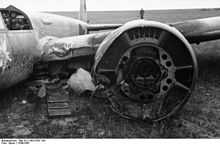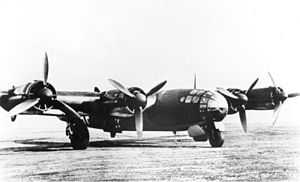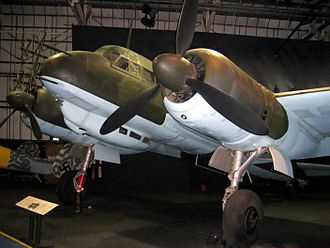Power-egg

The power-egg, a literal translation into English of the German term Kraftei, was a design feature in German Second World War era aircraft. The power-egg was a completely "unitized" modular engine installation, consisting of engine and all ancillary equipment, which could be swapped between suitably designed aircraft, with standardised quick-changing attachment points and connectors. In aircraft so designed the power-egg was removed before mean time to failure was reached and a fresh one installed, the removed engine would then be sent for maintenance. In ideal conditions spare engines were placed in sealed containers protected from damage and the elements, to be opened when needed. These existed in two differing formats — the initial Motoranlage format which used some specialized added components depending on what airframe it was meant for use on, and the Triebswerksanlage format, a more complete unitization format usually including exhaust and oil cooling systems.
Applications
Germany


Inline and radial engines were both incorporated into the Kraftei concept : the Junkers Jumo 211 was a pioneering example of engine unitization, as used on both the Junkers Ju 88 using a novel annular radiator for both main engine coolant and engine oil cooling needs, with exactly the same nacelle packaging used to power the Messerschmitt Me 264 V1's first flights. Both the examples of the Dornier Do 217 medium bomber powered by inline engines, and the Axis Powers' largest-flown powered aircraft of any type, the Blohm & Voss BV 238 flying boat used essentially the same unitized Daimler-Benz DB 603 powerplants. The BMW 801 fourteen-cylinder, twin-row radial engine was also provided in both formats for a number of German designs, especially for twin and multi-engined airframes, with the "M" or "T" first suffix letter designating whether it was a Motoranlage or Triebswerksanlage format unitized powerplant — the BMW-designed forward cowling ring always used with the 801 incorporated the engine's oil cooler, making it an easy task for aviation engineers to use for such a "unitized" mounting concept.
One known surviving Motoranlage-packaged BMW 801 radial still exists and is on restored display at the New England Air Museum, Bradley International Airport, Windsor Locks, CT. [1]
United Kingdom
A similar concept was devised by Rolls-Royce for the Merlin and later Griffon, a unitized engine installation and nacelle being designed for the Beaufighter II which was later also used on the Miles M.20, Avro Lancaster and Avro York, and the post-war CASA 2.111. This installation was subsequently redesigned into the 'Universal Power Plant' (UPP) radiator and cowling installations used on the Avro Lincoln, Avro Tudor, Canadair North Star, and Avro Shackleton. The Bristol Aeroplane Company had previously in 1938 also devised a 'power egg' for the Hercules engine that was used on the Bristol Beaufighter, Armstrong Whitworth Albemarle, Vickers Wellington, Short Stirling, and Handley Page Halifax.
See also
References
External link
- "Interchangeability" a 1939 Flight article
- "Engine Mountings" a 1944 Flight article
- "The Hercules Power Plant" a 1942 Flight article